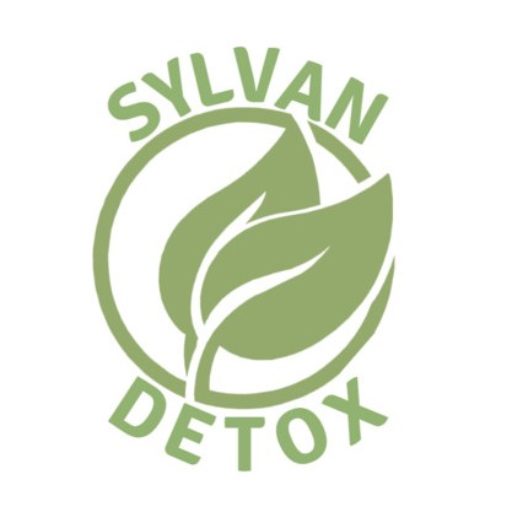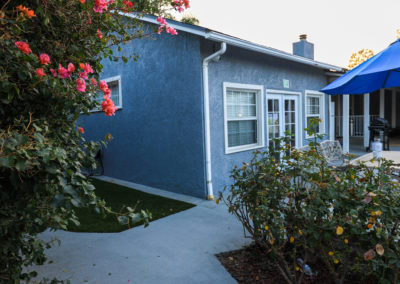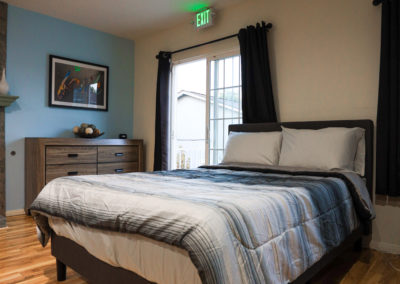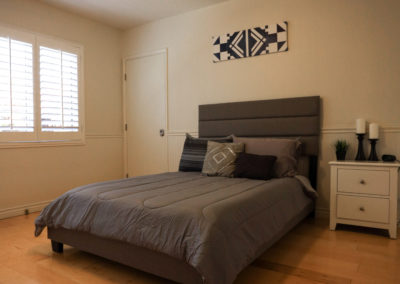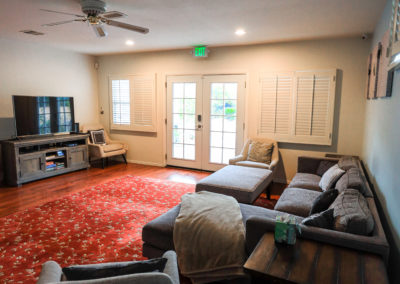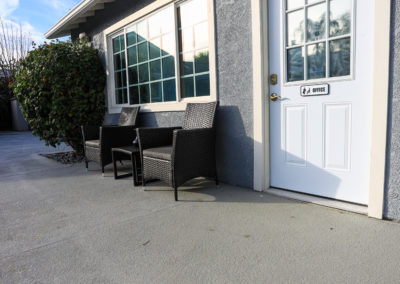Top-Rated Medically Assisted Treatment Program in San Fernando Valley
People struggling with addiction need the right treatments and therapies as they work toward recovery, and that’s why Sylvan Detox offers a wide range of options, including medically-assisted treatment (MAT). In conjunction with counseling and behavioral therapies, medications are provided to help clients with their addiction and achieve lasting results. There are several different medications, not to mention several different approaches to tackling addiction, and that’s why Sylvan Detox works to offer medication-assisted treatment and much more in San Fernando Valley.
What Is MAT?
If you or a loved one struggles with addiction or substance use disorder, you may benefit from medically-assisted treatment or MAT. According to the Substance Abuse and Mental Health Services Administration (SAMHSA), medication-assisted treatment is the “use of medications, in combination with counseling and behavioral therapies, to provide a ‘whole-patient’ approach to the treatment of substance use disorders.” All medications used for MAT are approved by the Food and Drug Administration (FDA). Plus, MAT programs are clinically driven and tailored to meet each patient’s needs and recovery goals.
Common prescription drugs used for MAT include:
- Acamprosate: used for alcohol use disorder for people who are no longer drinking and want to avoid drinking. This medication works by preventing people from drinking alcohol.
- Disulfiram: used for alcohol use disorder for chronic alcoholism.
- Naltrexone: used for alcohol use disorder; works by blocking the euphoric effects and feelings of intoxication. Naltrexone is an opioid antagonist, which means it covers the mu-receptor to block the effects of opioids if they are used
- Buprenorphine: used for opioid dependency; works by suppressing and reducing cravings for opioids. Buprenorphine is a partial agonist that doesn’t completely bind the mu-opioid receptor, but provides a ceiling effect.
- Methadone: used for opioid dependency; works to reduce opioids cravings and withdrawal symptoms by blocking the effect of opioids. Methadone is a full agonist that lessens the painful symptoms of opioid withdrawal.
- Naltrexone: used for opioid dependency; works by blocking the euphoric and sedative effects of opioids.
Typically, MAT is used to treat those addicted to opioids, such as heroin, as well as prescription pain relievers that have opiates in them. With MAT, the prescribed medication works to normalize brain chemistry, block the euphoric effects of alcohol and opioids, relieve physiological cravings, and normalize bodily functions without the negative impact of additional substances.
According to the Substance Abuse and Mental Health Services Administration (SAMHSA), there are an estimated 2 million people with an opioid disorder, including prescription pain medications. MAT has been proven to be clinically effective in significantly reducing the need for inpatient detoxification for individuals with an addiction. Medication-assisted treatment offers a more comprehensive, customized program of medication and behavioral therapy that address individual needs.
At the end of the day, the goal of MAT is full addiction recovery, which includes living a self-directed and independent life. Studies show that MAT has been shown to:
- Improve patient survival
- Increase retention in treatment
- Decrease illicit opiate use and other criminal activity among those with a substance use disorder
- Increase patients’ ability to find a job and retain employment
- Improve birth outcomes among women who are pregnant and have a substance use disorder
Additional research also shows that these medications and therapies can lower a person’s risk of contracting HIV or hepatitis C by reducing the chances of relapse.
In addition to medication treatment, MAT also involves therapeutic intervention. Psychosocial treatment, also known as behavioral health treatment, is recommended in conjunction with medication. In fact, patients who have psychosocial treatment in addition to MAT have better outcomes than those who do not. Common goals of behavioral therapy are to:
- Change underlying behaviors that may lead to drug abuse
- Encourage patients to responsibly take their prescribed medications
- Treat other psychiatric disorders
- Individual or group therapy sessions
- Connection to family support systems, including family therapy
- Referrals to community-based services
- Contingency management for positive behaviors
- Mutual help programs, such as Narcotics Anonymous (NA) 12-step program
Despite its effectiveness, many people are unable to benefit from this kind of treatment. One reason is that many treatment facilities are hesitant to rely on MAT. In fact, according to Pew research, only 23% of publicly funded treatment programs report offering any FDA-approved medications to treat substance use disorders. Additionally, less than half of private-sector treatment programs reported their physicians prescribed FDA-approved medications.
There are two major barriers to receiving MAT and they are limited health insurance coverage and a lack of qualified medical professionals to administer it. Plus, there’s a lack of authorized buprenorphine prescribers for treatments of substance abuse, which also makes it harder to get. Unfortunately, the number of Americans that struggle with a substance use disorder outnumbers the eligible providers able to prescribe medication-assisted treatment medications.
What To Expect During MAT?
If this is your first time seeking medication-assisted treatment, you may not know what to expect. Oftentimes, the first step of MAT is detoxification or detox. Detox occurs when the body rids itself of certain harmful substances, such as drugs or alcohol.
During detox, patients cease taking their substance of choice, whether that’s prescription drugs, illegal drugs, or alcohol. Since the body was previously dependent on these substances, you may experience symptoms of withdrawal. Withdrawal symptoms typically begin within 24 to 48 hours after not consuming drugs or alcohol, depending on the substance. Oftentimes, MAT can be used during withdrawal to ease the symptoms.
Withdrawal symptoms can be uncomfortable and dangerous, which is why medical oversight is important. Common signs of withdrawal include:
- Nausea and vomiting
- Sweating
- Fatigue
- Physical weakness
- Loss of appetite
- Shaking or tremors
- Nervousness
- Tension or worry
- Anxiety
- Dysphoria
- Dehydration from vomiting or diarrhea
- Severe depression or anxiety that leads to suicidal ideation
- Rapid breathing
- Increased heart rate or irregular heartbeat
- Delirium tremens
- Severe trembling
According to addiction experts, the worst physical symptoms of withdrawal can last from seven-to-10 days. Once the symptoms peak, mild symptoms may last for a few weeks or months. Overall, the length of detox differs depending on the individual and the substance they’re addicted to. In most cases, detox takes five-to-10 days, but depends on the amount of substance ingested, the length of time of addiction, and what type of drug was abused.
- Alcohol withdrawal can take between 24 hours and two weeks
- Prescription painkiller withdrawal can last up to two weeks
- Nicotine withdrawal can last for five days
- Heroin withdrawal can last for several weeks
During your first MAT session, you’ll be evaluated by a medical professional and asked a series of questions. Generally, you can expect to be asked about the following:
- Previous experiences with opioids and other drugs
- Physical health and medical history
- Mental health and past diagnoses
- Social and living situations
Next, you’ll learn more about the medications used in MAT and how they work. Known as confirmed consent, your doctor will ensure you understand everything that’s shared with you, including:
- The program’s requirements and expectations, including routine drug testing
- Specific details about medication-assisted treatment, which may include addiction services based on your individual needs and goals
- What type of medication you’ll take, including information about risks, benefits, and other treatment options
- The initiation process, which walks you through how to take your medication at home while having withdrawal symptoms
After your first visit, your medical provider will schedule a follow-up appointment for ongoing treatment. At each appointment, you’ll review how the medication is treating you, how you feel like it’s working, and the effects it’s having on your daily living.
Why Choose Sylvan Detox For Medically Assisted Treatment for Addiction
If you’re looking for medically-assisted treatment for substance use disorder, consider seeking help from Los Angeles’ no. 1 alcohol and drug rehab, Sylvan Detox. Here, you’ll work with dedicated staff to answer your questions about addiction, detox, and recovery to find the best treatment for you.
Sylvan Detox isn’t your average drug and alcohol rehab facility. In fact, it’s a luxury facility. With the perfect environment for clients to detox with comfort, Sylvan Detox features modern furniture and fixtures and semi-private rooms for each patient. Plus, the facility features spacious common rooms and access to outdoor living areas. Additionally, Sylvan Detox values the safety of residents and is fully equipped with 24/7 security and on-site staff to secure residents around the clock.
Another perk to Sylvan Detox is they offer medically-assisted treatment when needed. During MAT, patients receive 24/7 monitoring, as well as access to a safe and comfortable environment. In conjunction with MAT, Sylvan Detox also offers alternative therapies, such as yoga, sound therapy, massage, and more.
Another reason to choose Sylvan Detox for medically-assisted treatment is the dedicated staff. The truth is, you won’t find addiction professionals like the ones at Sylvan. From nurses to therapists, every Sylvan staff member is dedicated to providing each patient with the highest level of quality care possible.
Lastly, Sylvan Detox has the lavish amenities that every individual wants while they’re going through addiction recovery. From luxury mattresses to fluffy comforters, every item in the semi-private patient rooms was curated specifically to supplement your physical and emotional well-being. Between MAT and therapy programs, take advantage of Sylvan’s relaxing amenities, such as gaming consoles, foosball, corn hole, a 24-hour stocked snack area, common areas, and an hour patio with a barbeque.
Regardless of your addiction, our sober living in San Fernando Valley is here to provide you with the highest level of care. If you or a loved one struggles with addiction, seek help from Sylvan Detox.
